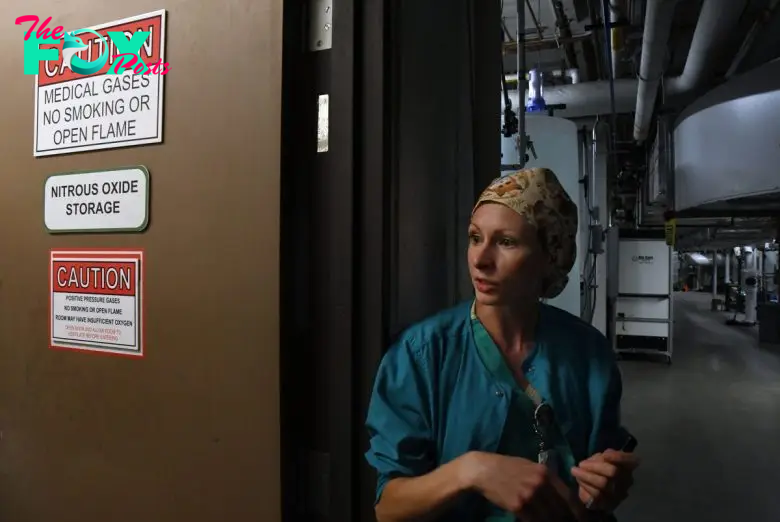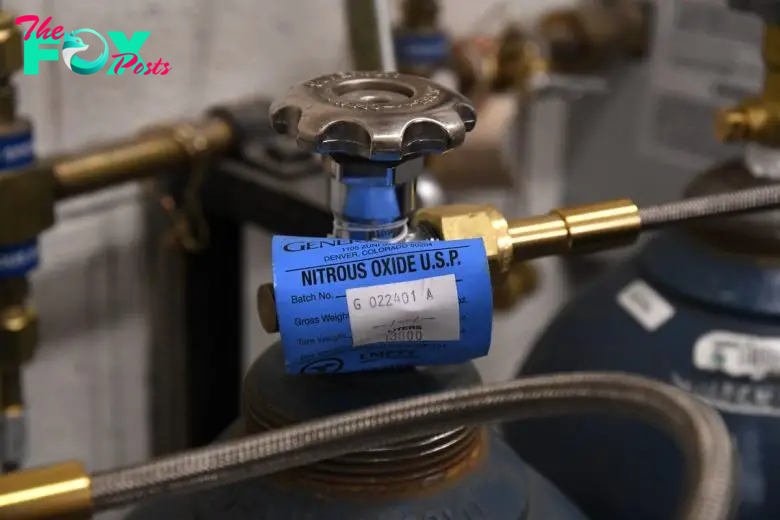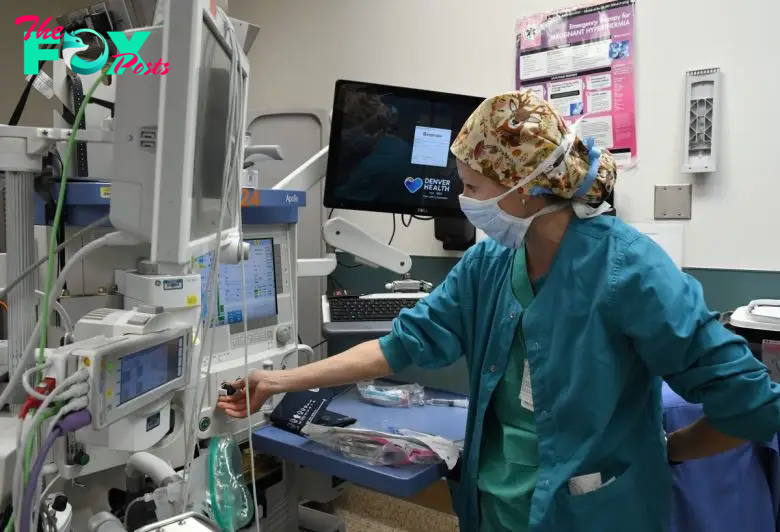Health
Denver Health was losing almost 90% of its nitrous oxide to leaks. So it cut the gas.
Deep inside Denver Health’s main building, on a locked floor that even most doctors who work at the hospital have never visited, around giant tanks of oxygen and under low-hanging ductwork and plumbing, there is a cramped room with eight tall, blue cylinders of compressed gas.
The cylinders contain nitrous oxide — N2O, the inhaled anesthetic known as laughing gas — and it is from this room that plumbing woven throughout the hospital carries the gas to operating rooms and other places where it may be used. Or at least it did.
Last month, Denver Health switched from using nitrous oxide centrally piped from these always-open tanks to using smaller, portable tanks located in operating rooms that can be shut off when not in use. Dr. Amanda Deis, a pediatric anesthesiologist at the hospital, was among those who helped twist close the knobs on the cylinders.
“This was a pretty monumental day,” she said.

The reason for the switch is twofold. First, nitrous oxide is a potent greenhouse gas and destroyer of atmospheric ozone. And, second, hospitals across the country waste a ton of it.
When Deis did the math, comparing how much laughing gas the hospital bought to how much patients used, she found that almost 90% was lost to leaks throughout the hospital. That’s no joke.
These leaks — every coupling and valve in the system presents an opportunity for gas to escape — aren’t enough at any one place to trigger indoor air quality concerns. The hospital tests to make sure.
But the leaks do mean that loose nitrous is a major factor in a hospital’s overall climate footprint. And this isn’t just a problem at Denver Health — hospitals across the globe have found similar rates of leakage.
☀️ READ MORE
Big little city hall on the prairie: Denver to replace thirsty turf with a garden of native plants
Regulators passed sweeping rules to mitigate impacts of oil and gas drilling. Will they protect Coloradans?
Xcel efficiency rebate program resumes after regulators OK money transfer from 2025 budget
Dr. Jodi Sherman, a professor of anesthesiology at the Yale School of Medicine who has become an expert in hospital climate impacts, said the health care sector accounts for nearly 9% of national greenhouse gas emissions. Within a hospital, the operating rooms are the most environmentally intensive areas, in part because of all the stuff that gets used and thrown out but also because of the climate impacts from anesthesia gas, she said.
Her research and the work of others have led to an increasing focus on improving hospitals’ environmental sustainability.
“We should all be working to make health care safer, and that includes mitigating its pollution,” Sherman said.
The majority of emissions that can be attributed to the health care sector don’t necessarily come from the vents and chimneys of hospitals, themselves, but from the supply chain for all the stuff that hospitals use — the medical equipment, the personal protective gear, the bandages, and so on. That’s about 80% of the industry’s emissions, Sherman said.
By contrast, research in the United Kingdom indicates that inhaled anesthetics account for about 5% of a hospital’s climate footprint. But those anesthetics are powerful contributors to warming.
As a greenhouse gas, nitrous oxide is 300 times more potent than carbon dioxide. Another common anesthesia gas, desflurane, is 2,500 times more potent than carbon dioxide.

Hospitals have tried to address this in part by cutting down on the amount of nitrous oxide that gets used. But Sherman said that’s not enough.
“Even if you’re using less, the system is just continuously leaking,” she said.
Hospitals can’t stop using nitrous oxide entirely because it still has areas where it’s needed, Deis said. She mentioned pediatric surgeries — some kids get sick if you give them injectable anesthesia while they’re awake, so Deis said she will use nitrous to help a kid fall asleep before giving them other drugs.

That made turning off the central tanks and switching to portable tanks the best option. Late last month, the American Society of Anesthesiologists agreed, issuing a statement calling for the deactivation of centrally piped nitrous oxide systems in favor of portable tanks.
Dr. David Abts, an anesthesiologist at Denver Health, said the hospital is the first large facility in Colorado to make the switch to portable nitrous tanks.
-

 Health10h ago
Health10h agoWhat an HPV Diagnosis Really Means
-

 Health16h ago
Health16h agoThere’s an E. Coli Outbreak in Organic Carrots
-

 Health1d ago
Health1d agoCOVID-19’s Surprising Effect on Cancer
-

 Health1d ago
Health1d agoColorado’s pioneering psychedelic program gets final tweaks as state plans to launch next year
-

 Health2d ago
Health2d agoWhat to Know About How Lupus Affects Weight
-

 Health5d ago
Health5d agoPeople Aren’t Sure About Having Kids. She Helps Them Decide
-

 Health5d ago
Health5d agoFYI: People Don’t Like When You Abbreviate Texts
-

 Health5d ago
Health5d agoKnee problems tend to flare up as you age – an orthopedic specialist explains available treatment options

















